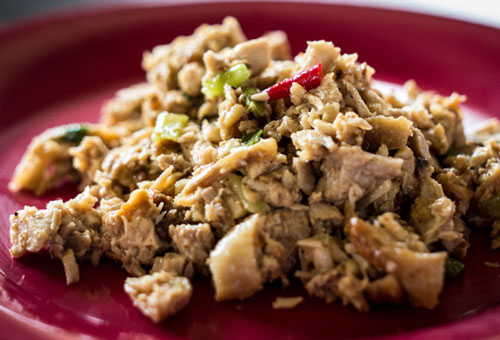So you just moved to Guam and you’re meeting some locals for the first time. Although CHamorus, the indigenous people of the island, are U.S. citizens some things are done a little differently here. Knowing some of the cultural rules and practices of the locals can help make for a good first impression.
SAY HÅFA ADAI
When you first meet someone the first word you usually say is “hello” and it’s no different on Guam where we say “Håfa Adai”. Johnny Sablan, a legend in CHamoru music, puts it best in his song, “Håfa Adai.” “If you ever need a native friend or a helping hand along the way. Wear a friendly smile and talk CHamoru style,” and say Håfa Adai. To say thank you it’s “Si Yu’os Ma’åse”.
EXPECT TO BE FED AND LEAVE WITH FOOD

Sometimes you may be walking on the beach and CHamorus having a party may invite you to have some food. CHamorus show their hospitality by sharing food with others, even strangers. It isn’t uncommon for new arrivals to Guam to be invited to family parties or fiestas after one chance meeting. And locals will make sure you eat. You’ll often hear “just that? Get some more.” The food is delicious so enjoy! And even when you’re all fed they’ll pack you “balutan” or pack you food to go. You can enjoy the delicious food at home and remember the memories you made from the party. Here's our fiesta guidebook with tips and tricks.
CELEBRATE MES CHAMORU
The month of March on Guam is Mes CHamoru, or CHamoru month. It’s a month of celebrating the local culture and lots of events are planned to showcase Guam’s indigenous culture. Whether it be showcasing CHamoru weaving or CHamoru food, be sure to check out the list of events during March to see where and how you can celebrate the local culture. Many other places on Guam like hotels and restaurants celebrate the month by offering CHamoru food on their menu. And the Guam Micronesia Island Fair which showcases not only CHamoru culture, but from the other islands near us is a great place to see what the region’s cultures look like.
GET READY TO GET CLOSE

Locals usually greet each other with a single cheek-kiss. If you’re not used to that, a handshake won’t offend anyone. But don’t be surprised if someone goes in for a kiss on the cheek when they first meet you. And if you’re meeting a CHamoru elder, the best way to greet them is manginge’. You take their right hand and place your nose and say either “Ñot” for a man or “Ñora” for a woman. It’s a sign of respect for our manåmko’ or elders and learning the gesture can earn you points with the locals.
BRING SOMETHING TO A PARTY
When CHamorus have parties, usually guests are expected to bring chenchule’, which is a contribution either through labor, food, drinks or money. It’s as easy as bringing a case of soda or some pastries from the bakery. If you like to get your hands dirty or don’t mind setting up a canopy you can help with the preparations for the party as your contribution. Expect to sign a guest book at weddings which usually includes what village you’re from. And if you do go to a wedding make sure you bring a card with some money as a box is set up for guests to drop it in. And work places even have parties at the office so sometimes you don’t even have to go out to eat.
CHURCH IS AN IMPORTANT PART OF LIFE
For many CHamorus, the Catholic church plays an important part of life. It’s not uncommon to have huge celebrations after baptisms, first holy communion, confirmation and weddings all done at the church. On Ash Wednesday, many CHamorus gather in church to get ashes on their forehead and to start the season of Lent. During this time, you’ll see places advertise seafood Lent menus since many people don’t eat meat during this time.







